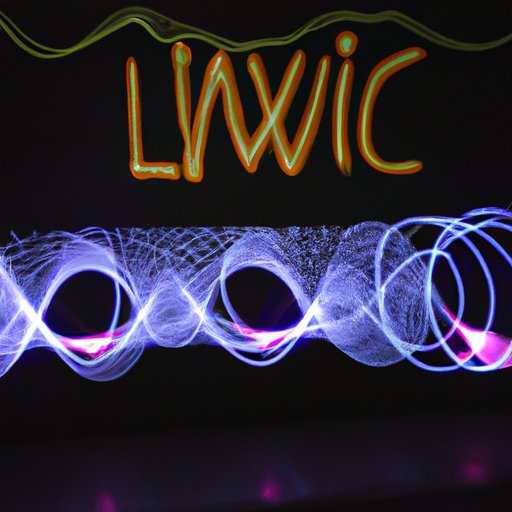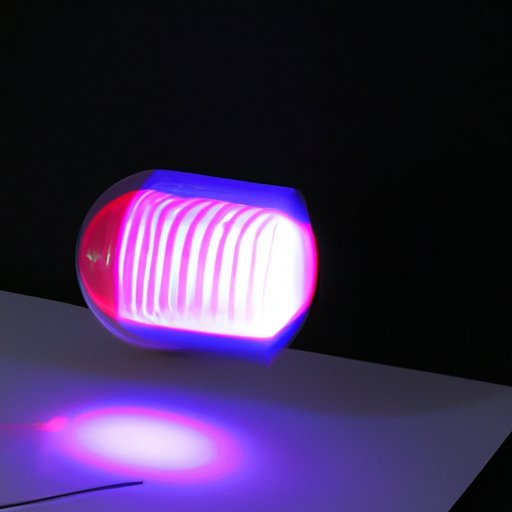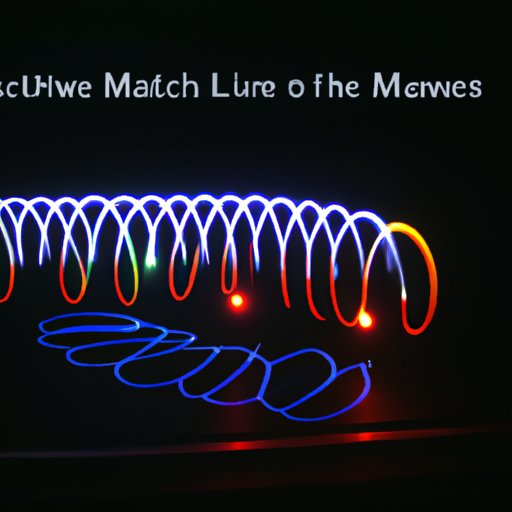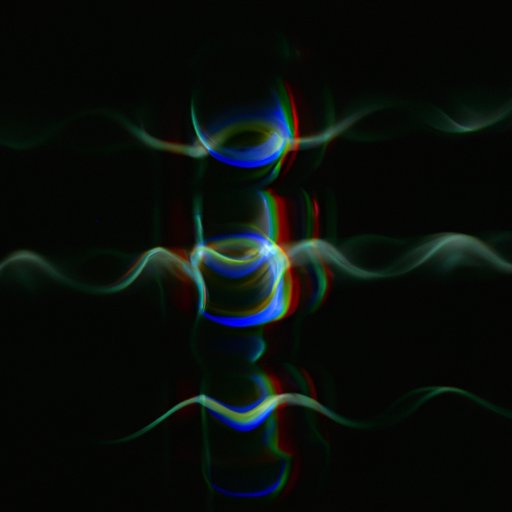Introduction
Light waves are an important part of our everyday lives. From the sun’s rays that warm us on a summer day to the visible light we use to see, light waves are essential to our existence. But what exactly are light waves, and how do they travel? This article will explore the science behind light wave travel, from the basics of their physical properties to their application in modern technology.

Exploring the Physics of Light Wave Travel
To begin, it is important to understand what a light wave is. Light waves are electromagnetic radiation, which means they are composed of electric and magnetic fields oscillating at right angles to each other. The speed of light waves is constant, moving through a vacuum at approximately 300 million meters per second, or 186,000 miles per second.
Now that we know what a light wave is, let’s take a look at how it moves. A light wave travels in a straight line, but can be changed by different objects it encounters along its path. This is known as the “ray model” of light, and it helps explain how a light wave navigates through space.
How Does a Light Wave Navigate Through Space?
One way a light wave can interact with objects in its environment is through reflection. Reflection occurs when a light wave bounces off a surface, such as a mirror or a wall. The angle at which the light wave hits the surface determines the angle at which it is reflected. This is known as the law of reflection.
In addition to reflection, a light wave can also be affected by refraction. Refraction occurs when a light wave passes through a medium, such as air or water, and is bent due to changes in its speed. This is known as the law of refraction.
Another phenomenon that affects light waves is diffraction. Diffraction occurs when a light wave passes around an object, such as a corner or a hole. The light wave will bend and spread out, creating a pattern known as an interference pattern.
Finally, there is polarization. Polarization occurs when a light wave is split into two components, one vibrating horizontally and one vibrating vertically. This is useful for filtering out certain types of light waves, such as those used in polarized sunglasses.
The Journey of a Light Wave: What Happens Along the Way?
Once a light wave has been emitted, it begins its journey through space. As it travels, it can be affected by various processes, such as propagation, dispersion, and absorption. Each of these processes can either help or hinder the light wave’s progress.
Propagation is the process by which a light wave moves through a medium, such as air or water. The speed at which the light wave moves depends on the medium; for example, light travels faster through a vacuum than through water.
Dispersion is the process by which a light wave is separated into its component colors. This is why a rainbow appears after a rainstorm—the sunlight is being dispersed by the raindrops.
Finally, there is absorption. This is the process by which a light wave is absorbed by an object, such as a leaf or a piece of paper. The object absorbs some of the light wave’s energy, and the light wave is then converted into heat or another form of energy.

A Closer Look at the Process of Light Wave Propagation
So far, we have discussed how a light wave moves through space, but what happens during its journey? To answer this question, we must first look at the speed of light. Light always travels at a constant speed, no matter what medium it is traveling through. This is known as the speed of light.
In addition, there are different types of light waves. Visible light is the type of light that we can see, but there are also ultraviolet (UV) and infrared (IR) light waves, which are invisible to the human eye. These different types of light waves all behave differently when propagating through a medium, and can be used for various applications.

Understanding the Mechanics of Light Wave Motion
Now that we know the basics of how light waves move and interact with their environment, let’s take a closer look at the underlying physics. There are two key concepts that are important to understand: frequency and wavelength.
Frequency is the number of times a light wave oscillates in a given time period, measured in hertz (Hz). Wavelength is the distance between two successive crests of a light wave, measured in meters (m). Together, these two factors determine the speed of a light wave, as well as its color and intensity.
Another phenomenon related to light wave motion is the Doppler effect. This occurs when a light wave is moving relative to an observer. As the light wave moves closer to the observer, its frequency increases; as it moves away from the observer, its frequency decreases. This phenomenon is responsible for the sound of a passing car or train, as well as the shifting of stars’ spectra.
Illuminating the Science Behind Light Wave Travel
Light waves are essential to our everyday lives, and understanding the science behind them is key to unlocking their potential. From navigation systems that rely on GPS signals to medical imaging techniques that use X-rays, light waves are used in a variety of applications.
In the future, light wave research could lead to new technologies, such as lasers and optical fibers, as well as advances in medicine, astronomy, and communications. With further understanding of the physics of light wave travel, scientists may even be able to develop ways to control light waves, allowing us to manipulate them for our own benefit.
Conclusion
Light waves are an important part of our lives, and understanding the science behind them is essential for developing new technologies and advancing our knowledge. From reflection and refraction to diffraction and interference, light waves interact with their environment in fascinating ways. And, with further exploration of the physics of light wave travel, the possibilities for future applications are endless.
(Note: Is this article not meeting your expectations? Do you have knowledge or insights to share? Unlock new opportunities and expand your reach by joining our authors team. Click Registration to join us and share your expertise with our readers.)
